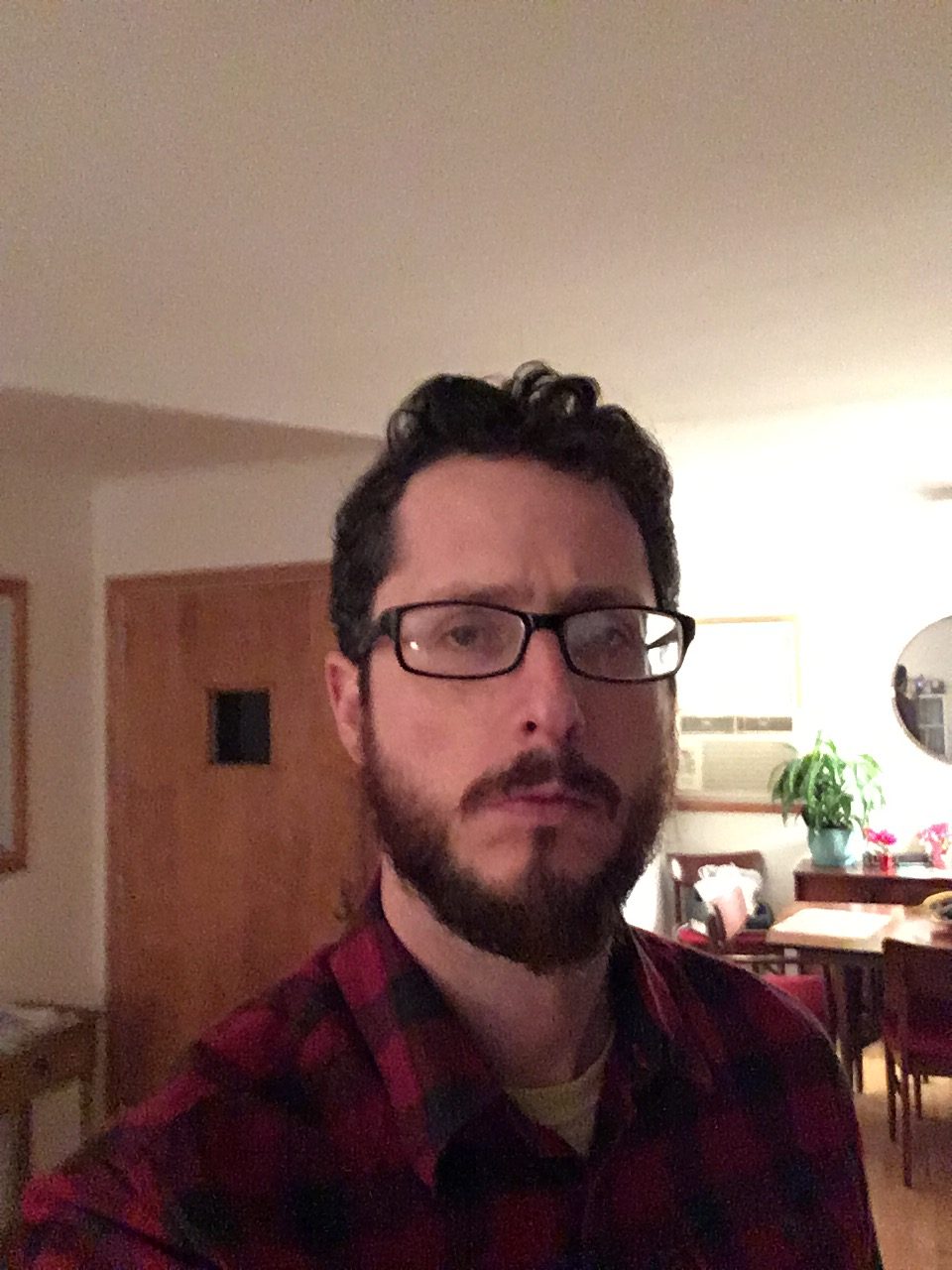THE IDEA OF DRASTICALLY REDUCING or even abolishing police forces as America has known them is not new, but in the months since George Floyd was killed by police in Minneapolis, it has matured into a debate that might help shape the way the country reckons with centuries of racial bias. It’s a momentous back-and-forth for the body politic to consider, but when a country carries this much baggage, there’s going to be a lot to unpack.
Lorenzo Jones is not new to these questions. Jones is the co-founder and co-executive director of the Katal Center for Health, Equity, and Justice, an advocacy group focused on ending mass criminalization and helping neighborhoods organize. The Chicago native has served as executive director for the Hartford, Connecticut-based criminal-justice reform group A Better Way Foundation and has consulted for numerous like-minded nationwide campaigns. Connecting from his Hartford home, Jones’s Zoom background reads: “They need to entangle Breonna Taylor’s killers in handcuffs,” referring to the March shooting of 26-year-old Taylor in her home. Taylor was killed by Louisville Metro cops acting on bad information; demands for action against those officers have become a rallying point for police critics, including Democratic vice presidential candidate and California Sen. Kamala Harris.
Those demands, which have reverberated through Southern California and beyond, echoed loudly for Jones, whose family has been touched by the consequences of official indifference and disregard. His sister Shaun battled mental illness and addiction, and was not caught in a rehabilitative safety net. Instead, she became involved in sex work, and was looked at by law enforcement as someone to be dealt with punitively, not compassionately. Jones admits that it took him years to believe his sister when she’d insist that there were no treatment programs willing to accept her. Shaun eventually died — killed by a combination of HIV, diabetes and bipolar disorder. To Jones, her story is illustrative of how policing too often fails — by seeing those it connects with only in terms of their crimes and their race and in the process eroding trust in neighborhoods and nuclear families.
“The embarrassment and guilt of having not believed her connects to the work for me, an organizer, by forcing me to give people the benefit of the doubt,” he said. “If I had given my sister the benefit of the doubt every time, I don’t know how it would have been different. And I feel like a lot of families go through that.”
The personal and the political
JONES KNOWS THESE ISSUES PERSONALLY, but also politically. And that sometimes creates ambivalence. Jones, for instance, is sympathetic to those who demand police abolition but conflicted about whether pushing for it is sound political strategy. (He describes himself as “a more practical type.”) Nor is he surprised that Joe Biden and other senior Democratic leaders demurred on explicit demands to defund police. In his view, the fact that these are very real calculations that presidential candidates need to make is evidence that the country is in what Jones calls “the death throes” of moderate progress.
“The abolitionist position here is not the finite position,” he said. “It’s on a continuum. That’s the challenge here: People have acted as if the demand to abolish things that are bad is the macro version of cancel culture. Sometimes, it’s well deserved. Other times, it’s not very realistic. Nobody’s canceling Donald Trump, because you can’t cancel out the president. The way that you do it is like any warfare. There’s a reconnaissance period where you just start to starve them. If you were to start to undo the police department’s role, reallocating those responsibilities to the appropriate agency, we’re having a much more lean and cleaner conversation that’s about what we actually have, not what we necessarily want.”
That template — reconsidering the place of police and thinking freshly about institutional and historical relationships, against the backdrop of a presidency that has inflamed tensions and divisions — runs through the national debate over race and society. It is being widely debated in academic and activist circles. This summer at UCLA, for instance, faculty at the law school discussed questions such as the interplay of social movements and legal change, the place of the United States in international policing law and practices, and the viability of specific reforms, such as eliminating the immunity that police officers enjoy from most lawsuits arising from their work (so-called “qualified immunity”). On the ground, activists have pressed the case, too, securing a promise of substantial budget cuts to the LAPD and pushing Los Angeles Mayor Eric Garcetti to forcefully address the need for reforms, including calls for “defunding” the department. Garcetti has not, however, entertained the idea of abolishing the LAPD.
This gets to the core of what makes the case for abolition so complex. Even in a scenario where police and local leadership are amenable to funding social workers who can mediate domestic disputes or addiction specialists who can respond to incidents involving drug abuse, there are questions as to whether anyone but an armed officer should be asked to put their lives on the line. But when, according to online data compiler Mapping Police Violence, nearly 30% of Americans who were killed by police since 2013 are Black, despite making up 13% of the population, how could anyone argue against the need for radical reconsideration? Some kind of template for a different way?
“I don’t know if I’ve ever seen a police state that I would accept,” said Jones, though he then proceeded to outline what one might look like. “It would be as small as possible, it would be as surgically useful as possible, and it would be much more of an investigative agency than an enforcement agency. The police chief would also be the deputy commissioner of public health.
“Imagine if what the police did was actually solve crimes instead of en- force laws,” he added. “What we’re trying to solve here is the appropriateness of a role. You have to understand the culture and climate of neighborhoods to appreciate the value of the librarian in the neighborhood, the crossing guard in that neighborhood. You have all these other people who have existing relationships that police will never have. There are so many options between arguing for the police continuing to do what they’ve been doing.”
Case study: Camden
CAMDEN, NEW JERSEY, IS A BLUE-COLLAR city of nearly 80,000 about five miles from Philadelphia. By the early 2010s, it had devolved from a bustling manufacturing hub to a scene of blight and decay, punished by rising crime and torn over who was to blame. Frustrations boiled over between local legislators and the powerful Camden Police Department union, which city officials accused of instilling complacency among its rank-and-file. In May 2013, the city formally dissolved the Camden Police Department, terminated hundreds of officers and agreed to the development of a new countywide force staffed with non-union officers who were supposed to integrate them- selves more deeply into communities rather than aggressively ticketing and arresting for minor offenses. It was a strategy that contained elements of broken-windows deterrence, “neighborhood policing” and what would now be called “defunding.”
Seven years later, crime has gone down, and anecdotal reports of improved relations between police and residents are encouraging. But benevolent authority is still authority. Nor does the new model do much to address racial biases or the disconnect between community members and the forces patrolling their streets.
“Every city is its own fiefdom, and the people in those municipalities must drive for police reform,” said Jones, for whom the Camden model falls short. “Systemic racism and misogyny are real inside of law enforcement. If the police are leading the plan to reform themselves, nobody will take it to heart. Camden, like any other municipality trying to take this on, continues to have the police drive the plan.”
The LAPD
MOREOVER, CAMDEN IS JUST ONE CASE STUDY. Others have pursued different paths and produced results worth considering.
In 1991, four Los Angeles police officers beat Rodney King into submission in a dark corner of Lake View Terrace. The videotape that captured the event riveted national attention on the issue of police brutality, and Los Angeles embarked on a long and difficult period of reform that required funding, not defunding, the LAPD. Today’s LAPD is bigger, better equipped and far more diverse than that in 1992 — almost no institution in America better reflects the diversity of its community, at least a community as diverse as Los Angeles. Crime has declined precipitously, and Los Angeles has vastly improved systems for receiving and investigating complaints against officers, as well as tracking those whose conduct arouses suspicion. Civilian control of the department is far more secure and established today than in the rocky days after the King beating, when the mayor and police chief jockeyed for control.
But critics of the LAPD still see a department steeped in notions of violence, in the assumption that police are the right people to respond to issues better left to social workers or addiction specialists or mental health experts. The department itself may be more diverse, but its ethos, at least to its critics, is derived from a history of racial repression. It has reformed — no serious person can claim that today’s LAPD is not a changed institution from that of the early 1990s — but some see that as far too little and demand new thinking.
Time to defund?
AS AMERICA GRAPPLES with its current round of police violence and the reactions to it, the demand to defund the police — even in the measured way that Camden has attempted it — places local officials in a tough spot politically. Many are sympathetic to programs that would reduce police contacts with wary residents, but they also face tough opposition from police unions and public safety advocates ready to pounce on any proposal that endangers the lives of residents or the livelihoods of officers.
They confront the realities of police and public safety funding, which can be subtly organized to perpetuate certain systems and discourage reform. Specifically, Jones points to Community Development Block Grants (CDBGs), a program enacted by President Gerald Ford as a linchpin of his 1974 Housing and Community Development Act. Overseen by the Department of Housing and Urban Development, CDBGs are essentially funds carved out for communities in need, though exactly how they’re allocated is determined by each respective municipality. Police departments are influential in that process.
“We’ve all heard that local police are incentivized to make arrests, like stop-and-frisk,” Jones said. “But the police department primarily justifies its budget through calls for service, so the more calls they get, the more that proves you need police. Police put together a deployment plan for their city based on the tax base and the resources they have. What’s happened — and this is welfare reform, this is the Clinton crime bill [Violent Crime Control and Law Enforcement Act of 1994] — is that the federal government restructures block grants. Once the money gets to a place like Illinois, it gets distributed through the state legislature. So the agreement is that the money primarily goes to police departments or through some law enforcement entity that ultimately signs the check that releases the money to a community.”
Benefits of CDBGs do trickle down to the most disadvantaged populations. They supply money for struggling business districts, for instance, and sometimes offer resources to help the homeless create or maintain HIV/ AIDS prevention efforts. But Jones and others argue that if this money were granted directly to grassroots neighborhood organizations, there would be an infrastructure for legitimizing school social workers or local pastors as qualified liaisons to augment the police’s pursuit of solving crimes that have already happened. In effect, it would be a communitywide deputizing that could reshape accountability.
Looking to other nations as a guide is useful, to a point. Norway, for in- stance, is often cited as a model of effective, community-conscious policing. A centralized federal force oversees officers who do not carry guns. Police have fatally shot fewer than five Norwegians since 2002. That’s an appealing contrast to the United States, where the drumbeat of police shootings has fueled the current wave of national protest.
But reforming American policing is not as simple as importing another set of rules. The United States does not have a national police force; it is home to more than 17,000 law enforcement agencies, from the mammoth NYPD to small-town departments with just a few officers. Some departments are highly sophisticated, with extensive training divisions, specialized units and elaborate systems of civilian oversight. Some departments enjoy gentle relations with their communities. Others, notably the LAPD, have been through wrenching periods of conflict and reform. Norway may handle its policing well, but it’s hard to imagine copying its success in the United States.
“I’ve had these conversations in a lot of languages,” Jones said, “All these other places are predicated on a thing that their system is built on, which is not necessarily a homogeneity of everyone being White. But we only have that White model in America. … What those other countries have is a system predicated on public health as a civil right, as a human right. The social experiment that is America has run out of willing participants to sacrifice themselves. If we had a system that prioritized public health, then we’d have a very different conversation about public safety.”
Back in Minneapolis, where George Floyd was killed at the outset of this eventful summer, the city council has attempted to learn from Camden while also hearing from a worldwide coalition of Black Lives Matter protesters and supporters. Meanwhile, the coronavirus pandemic and this year’s presidential election have given the police-reform debate both context and urgency. Jones, however, has been at the vanguard of numerous, kindred groundswells for change, regardless of the timeline or hierarchy of influence. He is more convinced than ever that change is coming.
“I’m going to split a hair here,” he acknowledged. “If I could see a path to abolition outside of cutting down the vines in front of us, I would jump on that tomorrow. I definitely am not going to try to get in the way, and am even willing to be the whipping post for some abolitionists. I appreciate what they’re trying to do, but with the number of years I’ve got on the earth, I feel like the best way for me to do it is to be as purposeful and processed as I can. I’m willing to take criticism for that, because at the end of the day, that’s where I’m hoping we end up: abolitionism and reconstruction.”
























